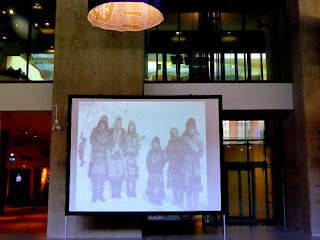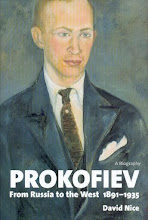It's there in this little philosophical gem, on a par with Tove Jansson's The Summer Book
and the singers, dancers and musicians of Estonia's Kihnu island brought it with them, along with smiles, laughs and a general happiness you can't fake, to the 12 Star Gallery of Europe House the other week (photos by Jamie Smith).
More on Mare and friends anon. In the meantime, I'm so glad I came across the American edition of Swedish entomologist Fredrik Sjöberg's The Fly Trap while browsing in Kensington Books (the author pictured below). A specialist in hoverflies, this splendid writer, translated with obvious style by Thomas Teal, has a rondo theme: 'the art and sometimes the bliss of limitation,' living as he does - or did, at the time of writing in 2014 - on Runmarö, a Swedish island of 300 inhabitants, much augmented by summer visitors. Here's the gist of it:
For an entomologist, 15 square kilometres is a whole world, a planet of its own. Not like a fairy tale you read to the kids again and again until they know it by heart. Not like a universe or a microcosm, similes I'm not willing to accept, but like a planet, neither more nor less - but with many white patches. Even if I were to swing my net an entire summer without adding a single species to my collection, the gaps in our knowledge will still be great, if not quite immeasurable. The fact is, they keep growing, keeping pace with our knowledge.
The issue, reduced to Strindberg's dismissive term 'buttonology,' connects with a parallel interest in the geologist's 'feeling for time' and Sjöberg's own attempt to 'grasp...temporal spaces so great they border on eternity' (Chapter 15. 'The Legible Landscape', is a masterpiece of writing about what we can grasp and where we stop).
Yet the perceptions are not random, despite the fluidity of Sjöberg's ruminations, often tinged by wryness; and there's a parallel character study, of the marvellous man who invented the giant fly trap of the title (and pictured above), René Malaise, a Swede (despite his French name) born in Stockholm in 1892. What a life! Malaise might have limited himself to one area of expertise, study of the sawfly, but like Sjöberg he had interests elsewhere, too - there's a fascinating final chapter on his collection of grand masters - and he travelled. A lot. In 1920 he left Sweden with five other adventurous folk, four men and two women in total, to explore the remote Kamchatka peninsula. Sjöberg's news that the collection from a later expedition to Burma was lodged in Gothenburg's Museum of World Culture - here's a specimen -
gave me a special quest when I was there the other week for Santtu-Matias Rouvali's first concert as the Gothenburg Symphony Orchestra's principal conductor. The helpful folk on the desk couldn't locate it, but there was a screening downstairs of photos from the Kamchatka adventure, one of three selected Swedish explorations.
A shot of Malaise himself came up on the screen, so I presume the Museum is happy for me to use the original online.
He took some splendid photos, like this one (though it may well be in Japan, which he visited after Kamchatka, and where he experienced a devastating earthquake).
And here's company, though I have no idea why the woman's face is scratched out.
One more in the context of the big room downstairs at the Museum
and a crate for the sort of thing I was actually hoping to see tucked away in the corner.
It's a very splendid building with a cafe on a kind of mezzanine level
which extends on to a terrace.
The exhibitions are there mostly to make schoolchildren think of the world around us. I loved the forthrightness of the display panels (in Swedish and English) in the way they described the plunder of the earth and the quashing of human rights. Like this: 'One could use many grave words to describe how a small percentage of the world's richest population have exploited the world around them in the past hundred years: irresponsibility, arrogance, greed and egoism'. I half expected an added 'so f*** you, 45th!' We could afford to be more direct in our language here. The fourth floor exhibition included a refugee boat whose occupiers had all drowned
and this cabinet of items owned by Mexicans and south Americans trying to cross the border to the north, with information about some miserable fates.
Which leads us back to the colourful woven dresses of the Kihnu islanders, living under happier circumstances and one of the most enlightened governments in the world. I first wrote about them describing our unforgettable day trip from Pärnu last summer, and I've managed to cut down for accommodation here one of the putatively 2000 year old wedding songs still in their repertoire, which they performed for us in a room of the island's museum.
It was so good to see once more Mare Mätas, the Tallinn-trained lawyer who'd returned to her native island to foster its UNESCO-protected culture, and the sweet accordion-playing girl who's won all sorts of awards in music competitions and has grown up quite a bit since then (she must be 11 now). There she is on the left.
This time it wasn't just dancing ladies. The most jovial chap imaginable sang ballads to his accordion in a very splendid and idiomatic style, and his son came along too. They're demonstrating their splendid traditionally-designed and knitted jumpers, two months in the making, for Mare here. I want one (jumper).
This was the other book-end reception of an exhibition of really superb Kihnu-people photos by the Frenchman Jérémie Jung, some of which formed a good backdrop to the performances. Clearly they loved him there, from their genuinely warm words about him, and when it came to joining in the dances, he knew all the steps (not featured here, but there was audience participation later).
I do hope there's funding for a book of the pictures. And still, deep in my soul, there's the wish to spend a whole year on the island to see nature through all its seasons. No reason that shouldn't happen some time, if not for a while yet.
































































